Table of Contents
Work coordination platform
Designed for the automotive industry
As a leader in innovation, you understand the importance of staying ahead of the curve in the fast-moving automotive 4.0 world. KanBo provides you with the tools to do just that by facilitating smart factory operations, streamlining project management, fostering collaboration and solving complex problems.
Abstract
This comprehensive analysis examines the role and importance of collaboration within the automotive industry, particularly in the context of Industry 4.0, a transformation characterized by the integration of digital and physical technologies. The article delves into strategic planning, the diversity of team structures, various levels of collaboration, human-machine team models, and the role of artificial intelligence (AI) in collaborative environments. It also explores how the Johansen's Computer-Supported Cooperative Work (CSCW) Matrix can facilitate collaboration in geographically dispersed and time-variant scenarios. Lastly, it emphasizes how collaboration platforms like KanBo can significantly enhance efficiency and productivity in the automotive industry as it moves towards Automotive 4.0.
Foreword
The concept of collaboration, if likened to an engine, has been at the heart of the automotive industry from the onset. An engine, when all components operate in harmony, truly exemplifies the essence of teamwork - it powerfully drives the car forward, just as seamless collaboration propels organizations towards their goals.
However, we stand at the precipice of a monumental paradigm shift. Much like how emerging technologies are revolutionizing the mechanics of automobiles, transitioning them from fuel-centered combustion engines to electric and hydrogen propulsion systems, so too is the face of collaboration taking on a new identity in the context of Industry 4.0.
Industry 4.0 stands on the shoulders of past industrial revolutions - steam power, electricity, and the Benz Patent-Motorcar have each propelled humanity to greater heights. Today stands an era of Artificial Intelligence (AI), Internet of Things (IoT), and seamless human-machine collaboration. It is a transformative era driven by digital dynamism, transforming how we perceive and engage in collaborative endeavours.
As Arkadiusz Gos, the director of Sales and Marketing at KanBo, and having keen insight on the trends transforming our industries, I passionately believe that Automotive 4.0 is not just about adopting advanced digital technologies. Instead, it is about learning, unlearning, and then relearning. It means embracing a mindset that is open to fresh perspectives, ready to let go of obsolete methods, and willing to learn new strategies and approaches. To absorb the new, the old must oftentimes be shed away.
A critical aspect of this learning process includes understanding how platforms like KanBo can be leveraged to foster effective collaboration within the dynamically evolving automotive sector. With its cutting-edge work coordination capabilities, KanBo is fully equipped to facilitate the smooth functioning of teams, bridge gaps in communication, enhance productivity, and thereby drive optimum results.
Just as vehicles now have new engines, factories too need a new heart in this age of automotive 4.0 – one that encourages innovation, fosters efficiency, and facilitates a smooth transition towards a reality dominated by Electro.
In the race of progress, the driving wheels have always been learning, unlearning, and relearning. As we journey forward, it holds even more substance. With this belief, this extensive exploration around Automotive 4.0 and the robust role of collaboration within it aims to arm you with essential insights that will bolster your company’s competitive edge in the automotive industry of the present and future.
So, gear up as we delve into a comprehensive analysis to equip you to conquer the challenges presented by the dawn of Automotive 4.0. Let us forge ahead in the engine called collaboration and drive towards the road of progress together.
Introduction
Collaboration is a crucial aspect of the automotive industry, carrying a variety of implications in relation to Industry 4.0. This comprehensive analysis delves into the prominent role of collaboration and communication within the automotive sector, particularly within the context of Industry 4.0, which represents a transformative leap in industrial production characterized by digitization and the marriage of physical and digital technologies. Collaboration takes on many forms within the automotive industry, establishing its relevance and essential nature within areas of production, development, and logistics, among others.
Several levels of Industry 4.0 implementation exist, ranging from the basic level of digitization to the optimized level, where companies are models for Industry 4.0, actively cooperating with business partners and optimizing value networks.
A significant distinction is visible in the flow of information between Industry 3.0, where data is typically siloed, and Industry 4.0, which fosters an integrative network of data, promoting improved efficiency and strategic alignment due to the advanced connectivity and collaborative data sharing.
Diversity within team structures in the automotive industry also plays a pivotal role in executing effective collaboration. Teams within the sector often encompass a wide range of roles and responsibilities, including engineers, designers, supply chain managers, and more. This diverse collaboration encourages innovation, solution-oriented approaches, and comprehensive decision-making in the industry.
This article was created to serve as a guiding resource for stakeholders and decision-makers in the automotive industry. By offering an extensive insight into the role and power of collaboration within the industry, it empowers informed decision-making that aligns with the evolving landscape of Industry 4.0.
The Role of Strategic Planning and Collaboration
The Need for Comprehensive Strategic Planning
Strategic planning is a critical process that outlines an organization's direction and the actions necessary to improve its performance. In the automotive industry, it involves setting objectives, determining actions to achieve the objectives, and mobilizing resources to execute the actions. This encompasses research and development, production, and distribution strategies. Comprehensive strategic planning is the foundation for implementing innovative technologies, meeting customer expectations, and staying competitive in the increasingly dynamic Automotive 4.0 landscape.
Effective Dissemination of Strategy: A Key to Successful Collaboration
Collaboration in the automotive industry requires effective communication and the sharing of goals, plans, and strategies. Successful collaboration enables organizations to share knowledge, leverage complementary skills, and foster innovative solutions. For collaboration to be effective, strategies must be clearly communicated to all team members to ensure alignment, commitment, and synchronized efforts. This is especially important in the Automotive 4.0 era, where digital technologies can bolster collaboration, speeding up the execution of strategic plans.
Methods to ensure efficient strategy dissemination across teams
An action plan is a detailed document that lays out the tasks, timelines, and resources necessary to implement the strategic plan. It brings clarity on "who does what, when, and how" to achieve the set objectives. A well-designed action plan is crucial for efficient coordination and meeting of strategic targets in the automotive sector, given its complex assembly lines and intricate supply chains.
KanBo, a cutting-edge work coordination platform, can be a meaningful change for strategy dissemination across teams in the auto industry. It serves as a digital “control room,” facilitating the real-time sharing of strategic plans and action steps, tracking progress, and ensuring synchronized teamwork. By integrating KanBo, auto companies can enjoy enhanced transparency, streamlined workflows and execution of strategic plans, even across geographically dispersed teams. This can bolster the success rate of strategic plans while fostering a more cohesive and collaborative working environment.
Diverse Team Structures in the Automotive Industry: A Comprehensive Guide to Collaborative Success
General Introduction to Team Types
Just as an engine's components work together in perfect synchronization, so do individual members in diverse team structures within the automotive industry. Each team, regardless of structure, is part of a larger operational ecosystem, contributing towards achieving overarching goals. Effective collaboration and communication, akin to timely coordination seen in engine parts, are foundational to their success. This could be further facilitated by a work coordination platform, such as KanBo.
Deep-dive into precise team types
1. Exclusive/Dedicated Teams
These teams focus singularly on specific goals. Utilizing KanBo's "Space" feature, these teams could efficiently manage resources, tasks, and timelines.
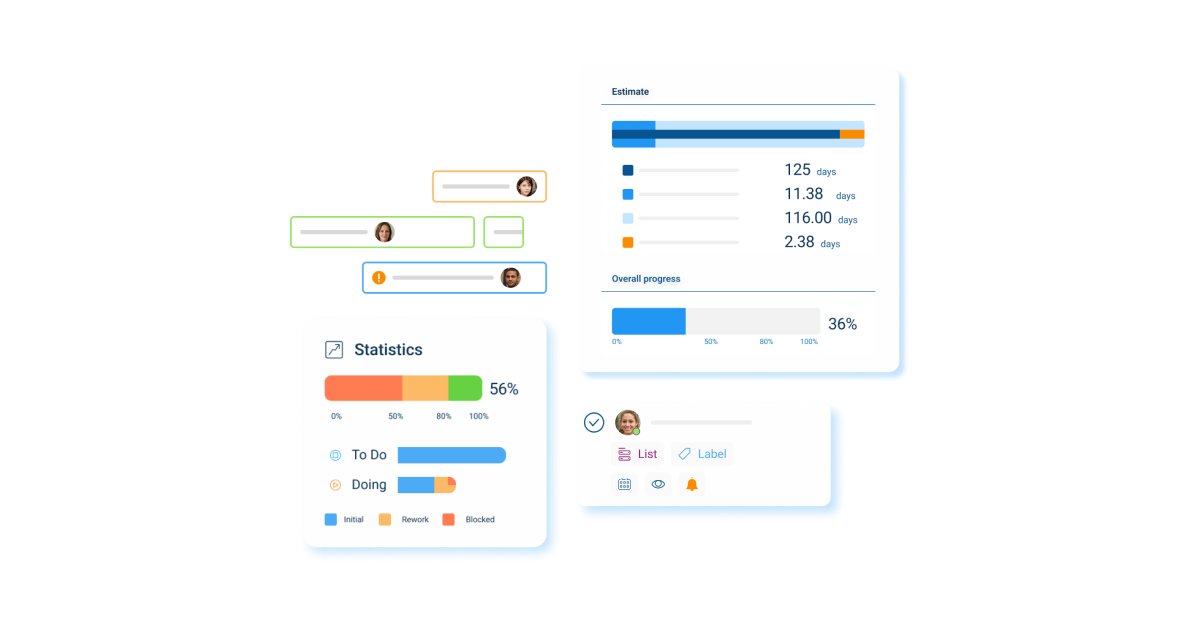
2. Time-bound/Project Teams
With the help of the "Gantt Chart" feature on KanBo, project teams can efficiently manage time-bound tasks by visualizing project timelines, task dependencies, and progress.
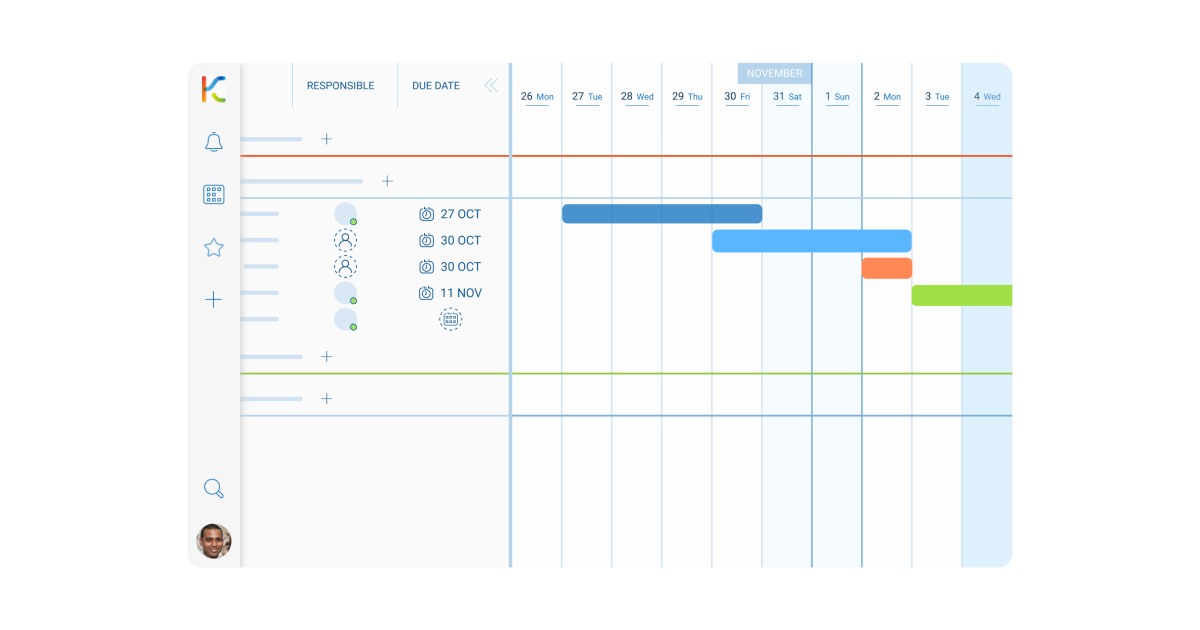
3. Leaderless/Self-managed Teams
These teams of self-starters can utilize KanBo's "Mind Map" feature to visualize team ideas, allowing smooth collaboration and brainstorming.
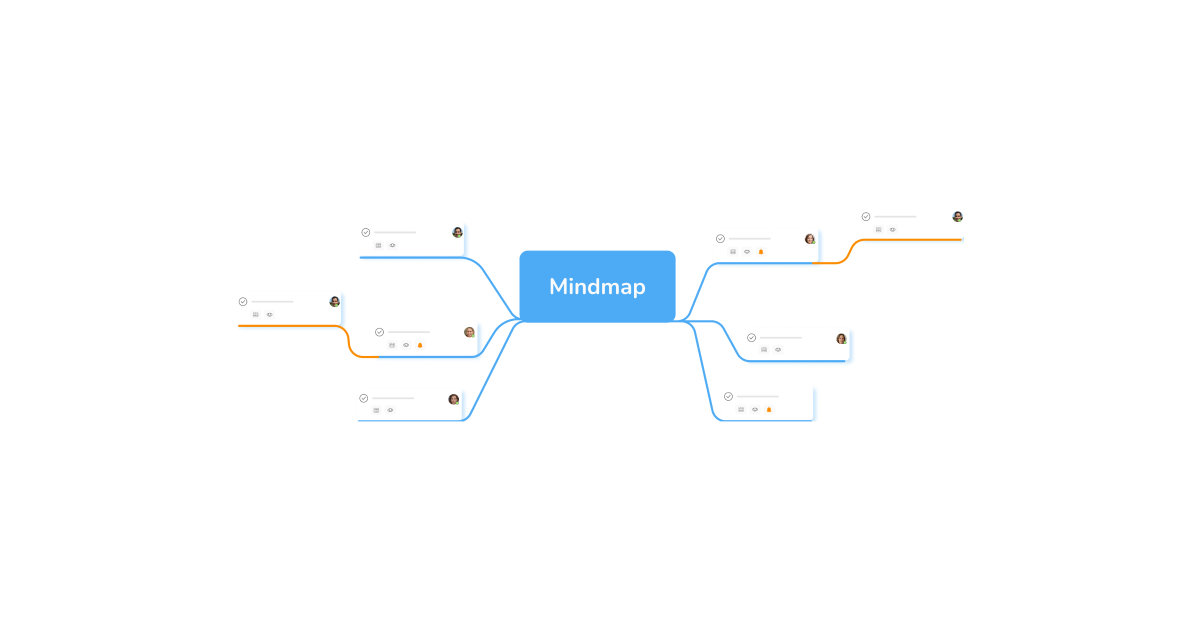
4. Geographically dispersed/Virtual Teams
KanBo's "Space" feature allows for smooth virtual collaboration, keeping all team members updated and informed, despite geographical dispersion.

5. Efficiency-driven/Operational Teams
The "Kanban Swim lanes" feature in KanBo aids in streamlining operational workflows, ensuring smooth running of daily tasks and operations.

6. Creative/Problem-solving Teams
The "Cards and Comments" feature allows these teams to generate, discuss, and refine creative ideas for problem-solving.

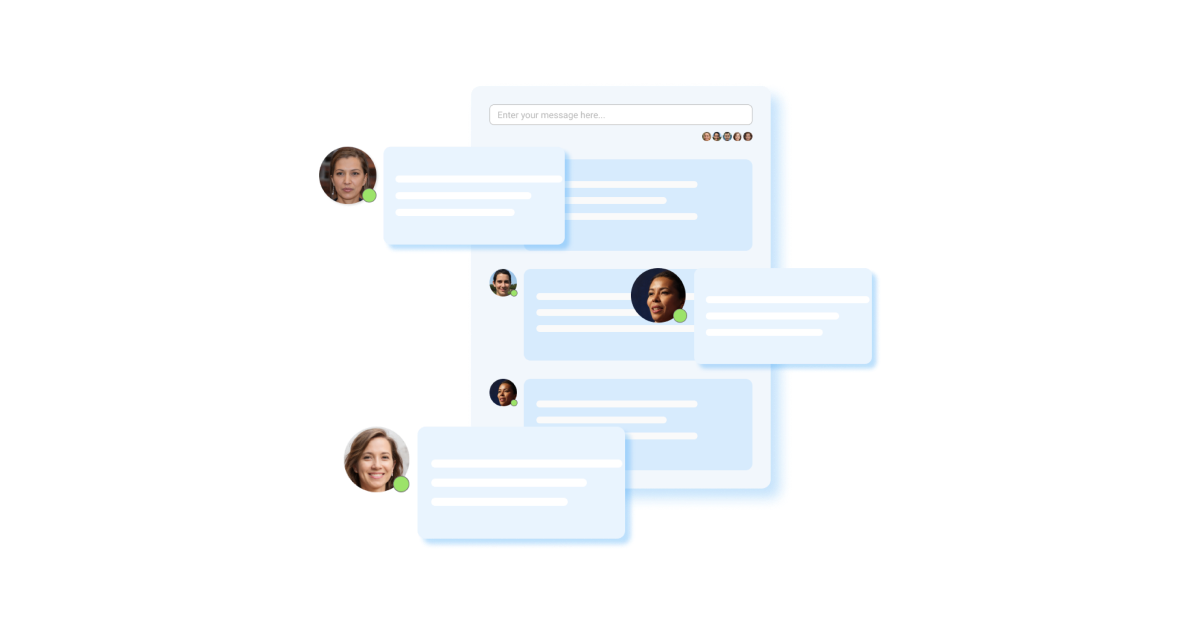
7. Niche/Informal Teams
KanBo's "Chat" feature facilitates direct and informal communication among team members, fostering flexibility and quick decision-making.

8. Decision-makers/Leadership Teams
The "Card Statuses & Card Relations" feature provides leadership teams with a visual and comprehensive view of ongoing tasks and their progress status, enabling effective decision-making.

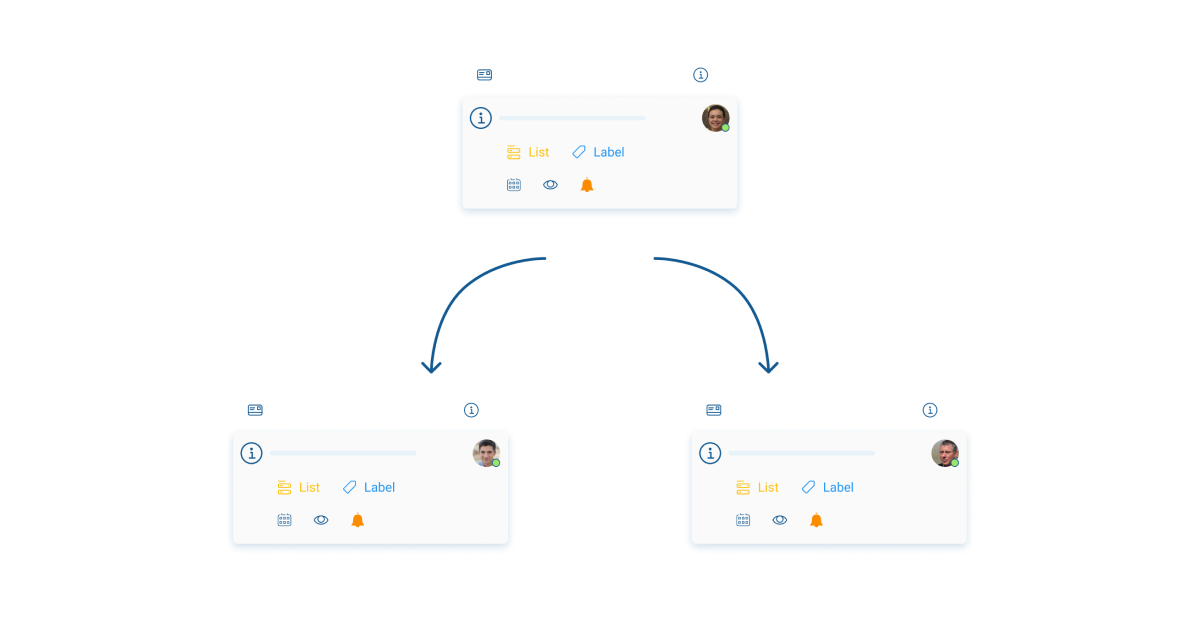
9. Regular/Working Teams
Using "Space Templates & Card Templates" features in KanBo, regular teams can manage their recurring tasks and workflows more efficiently.
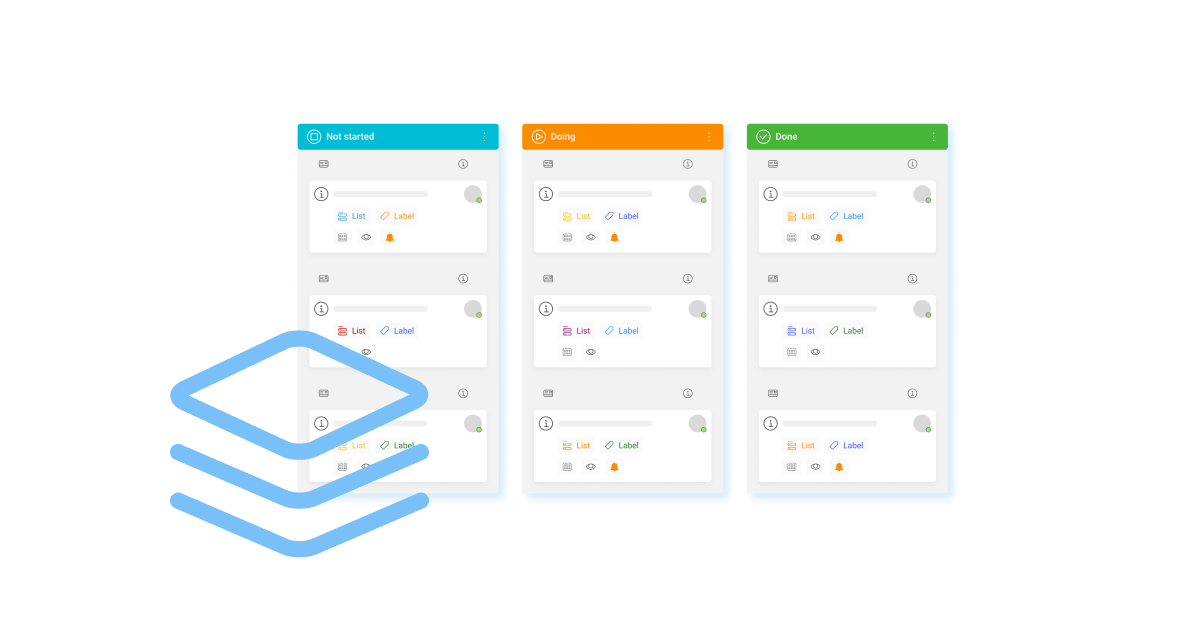

10. Specific-task/Special Purpose Teams
Leveraging the "Space" feature, these teams can segregate, track, and manage their specific tasks, promoting team focus and productivity.

11. Hybrid/Multi-functional Teams
The "Private and Shared Views" feature allows these teams to customize their workspace based on individual and collective needs, enhancing collaboration and efficiency.

12. Dual-responsibility/Matrix Teams
"Vertical and Horizontal Card Grouping" feature by KanBo provides a visual overview of overlapping tasks and responsibilities, facilitating seamless coordination and mutual accountability.

The integration of KanBo within these diverse team structures in the automotive industry can significantly improve collaboration, streamline workflows, and boost overall team performance, paving the way for the era of "Automotive 4.0". Emulating finely tuned engines in their quest for operational excellence, these teams can drive the industry forward into the future.
Collaboration Levels: Vertical, Horizontal, and Cross-functional
An overview of different collaboration levels
In the dynamic world of Automotive 4.0, numerous teams foster exceptional results through different forms of collaboration. Three broad types of collaboration are vertical, horizontal, and cross-functional, each of which caters to different kinds of projects or initiatives, and hence requires unique, flexible solutions.
Deep-dive into specifics of:
1. Top-down/Vertical collaboration
Vertical collaboration happens from higher-ups to lower-level employees within an organization. It is the process where teams coordinate vertically within hierarchical chains to drive tasks towards completion. KanBo's Spaces, Cards, and Card Relations features can enhance this type of collaboration by organizing and delegating tasks effectively across different hierarchies.
2. Peer-to-peer/Horizontal collaboration
Horizontal collaboration is between colleagues or teams of the same rank or department. It involves synchronizing efforts from various departments to achieve unified objectives. KanBo’s Space Activity Stream and Gantt Chart can foster effective horizontal coordination, offering real-time updates and visual timelines for enhanced collaboration.
3. Departmental-interplay/Cross-functional collaboration
Cross-functional collaboration is where employees from different functional areas purposefully work together. In such scenarios, the ability to swiftly share data, plan together, and simultaneously deliver becomes crucial. Using KanBo’s efficient task management and clear role definition features, along with its powerful communication tools such as mentions or comments, empowers teams to manage cross-functional coordination confidently.
Collaboration and communication are crucial components for successful teamwork in the evolving landscape of Automotive 4.0. Different teams tackling various tasks necessitate flexible solutions that are easy to use and adopt by all teammates. KanBo, as a smart work coordination platform, provides the essential tools needed to support all types of collaboration. It bridges the gap between team members, encouraging effective coordination to derive optimal results, thereby enabling organizations to thrive in their journey towards operational excellence.
Exploring the Johansen's Computer-Supported Cooperative Work (CSCW) Matrix
Introduction to the Johansen's CSCW Matrix of 1988
The Johansen's CSCW Matrix, introduced in 1988, offers a comprehensive framework to understand and contextualize the use of cooperative work systems. The matrix is devised based on two major parameters: whether the collaboration is geographically co-located or distributed, and whether it happens synchronously (at the same time) or asynchronously (at different times). The CSCW Matrix thus captures the essence of collaborative dynamics across different contexts, serving as an essential guiding tool in the world of cooperative work.
Roles and Impact of CSCW Matrix in Facilitating Collaboration
In facilitating collaboration, the CSCW Matrix plays an indispensable role, particularly within the realm of Automotive 4.0. As this sector hinges heavily on both synchronous and asynchronous communication across various locations, the CSCW Matrix provides a clear, structured blueprint of how to optimize these processes. By identifying and focusing on the four distinct segments of collaboration (Same time/Same place, Same time/Different place, Different time/Same place, and Different time/Different place), the matrix helps organizations in Automotive 4.0 to streamline their collaborative undertakings, fostering increased efficiency and productivity.
Application and Relevance of CSCW Matrix in the Present Context
Despite being introduced over three decades ago, the relevance of the CSCW Matrix persists, especially when organizations are using a daily collaboration platform like KanBo. This platform is designed for the modern digital age, combining project management, document management, real-time communication, and business process automation. This makes it a perfect tool for every part of the CSCW Matrix, catering to the varying dynamics of collaboration whether it is co-located or distributed, synchronous or asynchronous. By fully leveraging KanBo's diverse features, businesses can effectively navigate the complexities of collaboration, thereby maximizing their work coordination efforts within the parameters outlined by the CSCW Matrix.
The Future Collaborative Model: human-machine Teams
Explaining the concept of human-machine collaboration
Human-machine collaboration, or human-machine teaming, refers to the cooperative and coordinated efforts between humans and machines, such as robots or artificial intelligence systems, to achieve shared objectives. This type of collaboration can be observed in several fields, including industrial processes, service robotics, healthcare, and office work. Trust is an essential component that underpins this concept, as both the human and machine must have confidence in each other's ability to effectively contribute to the completion of tasks.
The benefits derived from human-machine cooperation
The synergistic relationship between humans and machines streamlines processes, maximizes productivity, and fortifies efficiency. Through the integration of human creativity and machine precision, this type of collaboration enhances decision-making and problem-solving capabilities, boosts task performance, and improves overall system performance and user satisfaction. Human-machine teams are particularly vital in the automotive industry, where they can facilitate accurate assembly processes, increase production speed, and further improve automobile quality.
The role of human-machine collaboration in AI evolution
Human-machine collaboration plays a pivotal role in the evolution of artificial intelligence (AI). By working alongside AI systems and providing real-world context, humans contribute to the “training” of these systems and help enhance their learning capabilities. This collaboration also facilitates the development of more advanced AI applications that can understand human behaviour and intentions, thereby driving the progression of technology towards increasingly autonomous systems.
KanBo and Supporting Team Types
KanBo, a comprehensive work coordination platform, is well-suited to fostering collaborative efforts of all team types enumerated in the Johansen matrix: same time-same place, same time-different places, different times-same place, and different times-different places. This versatility is advantageous in supporting the dynamic collaboration needs of diverse human-machine teams.
Machines, in the context of KanBo, can operate as regular users within the digital workspace, contributing to activity streams and being delegated tasks just like any human team member. Therefore, KanBo can function as a pivotal tool for automotive sectors striving to adopt an Automotive 4.0 model. By integrating KanBo into their operational framework, firms can effectively manage and coordinate the complex tasks involved in automotive production and achieve the seamless synchronization of human workers and machines. This can ultimately lead to enhanced operational efficiency and productivity, driving greater returns on investment.
The Interface of AI in Collaborative Environments
The advent of AI has brought about substantial change in collaborative environments, including the automotive industry. The technology has sparked a new era of human-machine collaboration, thereby amplifying efficiency, innovation, and strategic precision in various operational segments.
How AI augments human-machine collaboration
AI is increasingly becoming an integral part of collaborative settings in large organizations. It enhances human-machine collaboration by automating routine tasks, helping humans focus on areas requiring expertise and innovation. In industries such as Automotive 4.0, AI acts as a co-worker, contributing to data analysis, fault detection, real-time monitoring, and predictive maintenance. This human-machine collaboration results in significant time savings, error reduction, and improved output quality - the hallmarks of an efficient production setup.
The influence of AI on strategic planning and team coordination
AI plays a pivotal role in strategic planning and team coordination. By gathering and analyzing data, AI facilitates the identification of patterns, enabling accurate predictions. This intelligence is valuable in strategic decision-making and allows teams to plan their actions most effectively. Furthermore, AI can automate the coordination process, streamlining communication, task distribution, and progress tracking, which leads to improved team efficiency and better output in an industry as advanced and dynamic as Automotive 4.0.
Projections for future AI integrations in the industry
As we move forward, the integration of AI in the industry is set to become even more prevalent. Manufacturers are expected to leverage AI to drive autonomous operations, smart logistics, and intelligent supply chain management. Additionally, the integration of AI with Internet of Things (IoT) devices will further enhance the capability of predictive maintenance, real-time monitoring, and data analytics.
Using collaborative platforms like KanBo in daily operations has emerged as a meaningful change for modern organizations. It collects vital operational data that are visible in the Activity Stream. Subsequently, these data sets form a rich resource to train AI for future applications. They create an ecosystem where AI learns from operational data to provide valuable insights, automate processes, and predict trends. Thus, AI, utilizing data from platforms like KanBo, is poised to revolutionize not only the Automotive 4.0 and similar discerning sectors but also the broader realm of collaboration and knowledge management.
Conclusion
Recapitulation of Key Discussion Points
This extensive insight into the automotive industry has delved into the critical role of collaboration in various aspects of its operation amid the dawn of Industry 4.0. The importance of diverse team structures, strategic planning, various levels of collaboration, human-machine teams, AI integration, and the application of the CSCW Matrix have all been evaluated in the context of the automotive sector. The significance of embracing platforms like KanBo for facilitating efficient and coordinated work dynamics within this sector has also been emphasized.
A Concluding Note on the Significance, Benefits, and Future Prospects of Collaboration in the Automotive Industry
In conclusion, collaboration has emerged as a cardinal factor steering the success and competitiveness of the automotive industry in the era of industry 4.0. The mutual adoption of modern technological tools and efficient teamwork can bring about prolific gains in the form of improved efficiency, enhanced innovation, and comprehensive strategic planning. Considering the future, the spectrum of collaboration is likely to expand even further, with AI playing a more engrained role and human-machine teams becoming far more commonplace. As we progress towards Automotive 4.0, the power of collaboration will continue to be a pivotal force in shaping the future of the automotive industry at large.
Links and resources
- https://www.linkedin.com/pulse/reimagining-business-dynamics-control-coordination-strategic-gos
- https://www.researchgate.net/publication/331507570_Automotive_Industry_in_the_Context_of_Industry_40_Strategy
- https://www.linkedin.com/pulse/mastering-art-collaboration-comprehensive-guide-optimizing-gos
- https://www.linkedin.com/pulse/kanbo-easing-teamwork-work-coordination-large-organizations-kanbo
- https://www.mdpi.com/899324
- https://www.linkedin.com/pulse/kanbo-your-ultimate-solution-streamlining-collaboration-human-machine
- https://openai.com/blog/planning-for-agi-and-beyond
- https://www.linkedin.com/pulse/beyond-human-limitations-tapping-agi-revolutionary-cooperation-gos
- https://en.wikipedia.org/wiki/Computer-supported_cooperative_work#
- https://www.linkedin.com/pulse/exploring-power-computer-supported-cooperative-work-cscw-gos
Table of Contents
Work coordination platform
Designed for the automotive industry
As a leader in innovation, you understand the importance of staying ahead of the curve in the fast-moving automotive 4.0 world. KanBo provides you with the tools to do just that by facilitating smart factory operations, streamlining project management, fostering collaboration and solving complex problems.
Abstract
This comprehensive analysis examines the role and importance of collaboration within the automotive industry, particularly in the context of Industry 4.0, a transformation characterized by the integration of digital and physical technologies. The article delves into strategic planning, the diversity of team structures, various levels of collaboration, human-machine team models, and the role of artificial intelligence (AI) in collaborative environments. It also explores how the Johansen's Computer-Supported Cooperative Work (CSCW) Matrix can facilitate collaboration in geographically dispersed and time-variant scenarios. Lastly, it emphasizes how collaboration platforms like KanBo can significantly enhance efficiency and productivity in the automotive industry as it moves towards Automotive 4.0.
Foreword
The concept of collaboration, if likened to an engine, has been at the heart of the automotive industry from the onset. An engine, when all components operate in harmony, truly exemplifies the essence of teamwork - it powerfully drives the car forward, just as seamless collaboration propels organizations towards their goals.
However, we stand at the precipice of a monumental paradigm shift. Much like how emerging technologies are revolutionizing the mechanics of automobiles, transitioning them from fuel-centered combustion engines to electric and hydrogen propulsion systems, so too is the face of collaboration taking on a new identity in the context of Industry 4.0.
Industry 4.0 stands on the shoulders of past industrial revolutions - steam power, electricity, and the Benz Patent-Motorcar have each propelled humanity to greater heights. Today stands an era of Artificial Intelligence (AI), Internet of Things (IoT), and seamless human-machine collaboration. It is a transformative era driven by digital dynamism, transforming how we perceive and engage in collaborative endeavours.
As Arkadiusz Gos, the director of Sales and Marketing at KanBo, and having keen insight on the trends transforming our industries, I passionately believe that Automotive 4.0 is not just about adopting advanced digital technologies. Instead, it is about learning, unlearning, and then relearning. It means embracing a mindset that is open to fresh perspectives, ready to let go of obsolete methods, and willing to learn new strategies and approaches. To absorb the new, the old must oftentimes be shed away.
A critical aspect of this learning process includes understanding how platforms like KanBo can be leveraged to foster effective collaboration within the dynamically evolving automotive sector. With its cutting-edge work coordination capabilities, KanBo is fully equipped to facilitate the smooth functioning of teams, bridge gaps in communication, enhance productivity, and thereby drive optimum results.
Just as vehicles now have new engines, factories too need a new heart in this age of automotive 4.0 – one that encourages innovation, fosters efficiency, and facilitates a smooth transition towards a reality dominated by Electro.
In the race of progress, the driving wheels have always been learning, unlearning, and relearning. As we journey forward, it holds even more substance. With this belief, this extensive exploration around Automotive 4.0 and the robust role of collaboration within it aims to arm you with essential insights that will bolster your company’s competitive edge in the automotive industry of the present and future.
So, gear up as we delve into a comprehensive analysis to equip you to conquer the challenges presented by the dawn of Automotive 4.0. Let us forge ahead in the engine called collaboration and drive towards the road of progress together.
Introduction
Collaboration is a crucial aspect of the automotive industry, carrying a variety of implications in relation to Industry 4.0. This comprehensive analysis delves into the prominent role of collaboration and communication within the automotive sector, particularly within the context of Industry 4.0, which represents a transformative leap in industrial production characterized by digitization and the marriage of physical and digital technologies. Collaboration takes on many forms within the automotive industry, establishing its relevance and essential nature within areas of production, development, and logistics, among others.
Several levels of Industry 4.0 implementation exist, ranging from the basic level of digitization to the optimized level, where companies are models for Industry 4.0, actively cooperating with business partners and optimizing value networks.
A significant distinction is visible in the flow of information between Industry 3.0, where data is typically siloed, and Industry 4.0, which fosters an integrative network of data, promoting improved efficiency and strategic alignment due to the advanced connectivity and collaborative data sharing.
Diversity within team structures in the automotive industry also plays a pivotal role in executing effective collaboration. Teams within the sector often encompass a wide range of roles and responsibilities, including engineers, designers, supply chain managers, and more. This diverse collaboration encourages innovation, solution-oriented approaches, and comprehensive decision-making in the industry.
This article was created to serve as a guiding resource for stakeholders and decision-makers in the automotive industry. By offering an extensive insight into the role and power of collaboration within the industry, it empowers informed decision-making that aligns with the evolving landscape of Industry 4.0.
The Role of Strategic Planning and Collaboration
The Need for Comprehensive Strategic Planning
Strategic planning is a critical process that outlines an organization's direction and the actions necessary to improve its performance. In the automotive industry, it involves setting objectives, determining actions to achieve the objectives, and mobilizing resources to execute the actions. This encompasses research and development, production, and distribution strategies. Comprehensive strategic planning is the foundation for implementing innovative technologies, meeting customer expectations, and staying competitive in the increasingly dynamic Automotive 4.0 landscape.
Effective Dissemination of Strategy: A Key to Successful Collaboration
Collaboration in the automotive industry requires effective communication and the sharing of goals, plans, and strategies. Successful collaboration enables organizations to share knowledge, leverage complementary skills, and foster innovative solutions. For collaboration to be effective, strategies must be clearly communicated to all team members to ensure alignment, commitment, and synchronized efforts. This is especially important in the Automotive 4.0 era, where digital technologies can bolster collaboration, speeding up the execution of strategic plans.
Methods to ensure efficient strategy dissemination across teams
An action plan is a detailed document that lays out the tasks, timelines, and resources necessary to implement the strategic plan. It brings clarity on "who does what, when, and how" to achieve the set objectives. A well-designed action plan is crucial for efficient coordination and meeting of strategic targets in the automotive sector, given its complex assembly lines and intricate supply chains.
KanBo, a cutting-edge work coordination platform, can be a meaningful change for strategy dissemination across teams in the auto industry. It serves as a digital “control room,” facilitating the real-time sharing of strategic plans and action steps, tracking progress, and ensuring synchronized teamwork. By integrating KanBo, auto companies can enjoy enhanced transparency, streamlined workflows and execution of strategic plans, even across geographically dispersed teams. This can bolster the success rate of strategic plans while fostering a more cohesive and collaborative working environment.
Diverse Team Structures in the Automotive Industry: A Comprehensive Guide to Collaborative Success
General Introduction to Team Types
Just as an engine's components work together in perfect synchronization, so do individual members in diverse team structures within the automotive industry. Each team, regardless of structure, is part of a larger operational ecosystem, contributing towards achieving overarching goals. Effective collaboration and communication, akin to timely coordination seen in engine parts, are foundational to their success. This could be further facilitated by a work coordination platform, such as KanBo.
Deep-dive into precise team types
1. Exclusive/Dedicated Teams
These teams focus singularly on specific goals. Utilizing KanBo's "Space" feature, these teams could efficiently manage resources, tasks, and timelines.

2. Time-bound/Project Teams
With the help of the "Gantt Chart" feature on KanBo, project teams can efficiently manage time-bound tasks by visualizing project timelines, task dependencies, and progress.

3. Leaderless/Self-managed Teams
These teams of self-starters can utilize KanBo's "Mind Map" feature to visualize team ideas, allowing smooth collaboration and brainstorming.

4. Geographically dispersed/Virtual Teams
KanBo's "Space" feature allows for smooth virtual collaboration, keeping all team members updated and informed, despite geographical dispersion.

5. Efficiency-driven/Operational Teams
The "Kanban Swim lanes" feature in KanBo aids in streamlining operational workflows, ensuring smooth running of daily tasks and operations.

6. Creative/Problem-solving Teams
The "Cards and Comments" feature allows these teams to generate, discuss, and refine creative ideas for problem-solving.


7. Niche/Informal Teams
KanBo's "Chat" feature facilitates direct and informal communication among team members, fostering flexibility and quick decision-making.

8. Decision-makers/Leadership Teams
The "Card Statuses & Card Relations" feature provides leadership teams with a visual and comprehensive view of ongoing tasks and their progress status, enabling effective decision-making.


9. Regular/Working Teams
Using "Space Templates & Card Templates" features in KanBo, regular teams can manage their recurring tasks and workflows more efficiently.


10. Specific-task/Special Purpose Teams
Leveraging the "Space" feature, these teams can segregate, track, and manage their specific tasks, promoting team focus and productivity.

11. Hybrid/Multi-functional Teams
The "Private and Shared Views" feature allows these teams to customize their workspace based on individual and collective needs, enhancing collaboration and efficiency.

12. Dual-responsibility/Matrix Teams
"Vertical and Horizontal Card Grouping" feature by KanBo provides a visual overview of overlapping tasks and responsibilities, facilitating seamless coordination and mutual accountability.

The integration of KanBo within these diverse team structures in the automotive industry can significantly improve collaboration, streamline workflows, and boost overall team performance, paving the way for the era of "Automotive 4.0". Emulating finely tuned engines in their quest for operational excellence, these teams can drive the industry forward into the future.
Collaboration Levels: Vertical, Horizontal, and Cross-functional
An overview of different collaboration levels
In the dynamic world of Automotive 4.0, numerous teams foster exceptional results through different forms of collaboration. Three broad types of collaboration are vertical, horizontal, and cross-functional, each of which caters to different kinds of projects or initiatives, and hence requires unique, flexible solutions.
Deep-dive into specifics of:
1. Top-down/Vertical collaboration
Vertical collaboration happens from higher-ups to lower-level employees within an organization. It is the process where teams coordinate vertically within hierarchical chains to drive tasks towards completion. KanBo's Spaces, Cards, and Card Relations features can enhance this type of collaboration by organizing and delegating tasks effectively across different hierarchies.
2. Peer-to-peer/Horizontal collaboration
Horizontal collaboration is between colleagues or teams of the same rank or department. It involves synchronizing efforts from various departments to achieve unified objectives. KanBo’s Space Activity Stream and Gantt Chart can foster effective horizontal coordination, offering real-time updates and visual timelines for enhanced collaboration.
3. Departmental-interplay/Cross-functional collaboration
Cross-functional collaboration is where employees from different functional areas purposefully work together. In such scenarios, the ability to swiftly share data, plan together, and simultaneously deliver becomes crucial. Using KanBo’s efficient task management and clear role definition features, along with its powerful communication tools such as mentions or comments, empowers teams to manage cross-functional coordination confidently.
Collaboration and communication are crucial components for successful teamwork in the evolving landscape of Automotive 4.0. Different teams tackling various tasks necessitate flexible solutions that are easy to use and adopt by all teammates. KanBo, as a smart work coordination platform, provides the essential tools needed to support all types of collaboration. It bridges the gap between team members, encouraging effective coordination to derive optimal results, thereby enabling organizations to thrive in their journey towards operational excellence.
Exploring the Johansen's Computer-Supported Cooperative Work (CSCW) Matrix
Introduction to the Johansen's CSCW Matrix of 1988
The Johansen's CSCW Matrix, introduced in 1988, offers a comprehensive framework to understand and contextualize the use of cooperative work systems. The matrix is devised based on two major parameters: whether the collaboration is geographically co-located or distributed, and whether it happens synchronously (at the same time) or asynchronously (at different times). The CSCW Matrix thus captures the essence of collaborative dynamics across different contexts, serving as an essential guiding tool in the world of cooperative work.
Roles and Impact of CSCW Matrix in Facilitating Collaboration
In facilitating collaboration, the CSCW Matrix plays an indispensable role, particularly within the realm of Automotive 4.0. As this sector hinges heavily on both synchronous and asynchronous communication across various locations, the CSCW Matrix provides a clear, structured blueprint of how to optimize these processes. By identifying and focusing on the four distinct segments of collaboration (Same time/Same place, Same time/Different place, Different time/Same place, and Different time/Different place), the matrix helps organizations in Automotive 4.0 to streamline their collaborative undertakings, fostering increased efficiency and productivity.
Application and Relevance of CSCW Matrix in the Present Context
Despite being introduced over three decades ago, the relevance of the CSCW Matrix persists, especially when organizations are using a daily collaboration platform like KanBo. This platform is designed for the modern digital age, combining project management, document management, real-time communication, and business process automation. This makes it a perfect tool for every part of the CSCW Matrix, catering to the varying dynamics of collaboration whether it is co-located or distributed, synchronous or asynchronous. By fully leveraging KanBo's diverse features, businesses can effectively navigate the complexities of collaboration, thereby maximizing their work coordination efforts within the parameters outlined by the CSCW Matrix.
The Future Collaborative Model: human-machine Teams
Explaining the concept of human-machine collaboration
Human-machine collaboration, or human-machine teaming, refers to the cooperative and coordinated efforts between humans and machines, such as robots or artificial intelligence systems, to achieve shared objectives. This type of collaboration can be observed in several fields, including industrial processes, service robotics, healthcare, and office work. Trust is an essential component that underpins this concept, as both the human and machine must have confidence in each other's ability to effectively contribute to the completion of tasks.
The benefits derived from human-machine cooperation
The synergistic relationship between humans and machines streamlines processes, maximizes productivity, and fortifies efficiency. Through the integration of human creativity and machine precision, this type of collaboration enhances decision-making and problem-solving capabilities, boosts task performance, and improves overall system performance and user satisfaction. Human-machine teams are particularly vital in the automotive industry, where they can facilitate accurate assembly processes, increase production speed, and further improve automobile quality.
The role of human-machine collaboration in AI evolution
Human-machine collaboration plays a pivotal role in the evolution of artificial intelligence (AI). By working alongside AI systems and providing real-world context, humans contribute to the “training” of these systems and help enhance their learning capabilities. This collaboration also facilitates the development of more advanced AI applications that can understand human behaviour and intentions, thereby driving the progression of technology towards increasingly autonomous systems.
KanBo and Supporting Team Types
KanBo, a comprehensive work coordination platform, is well-suited to fostering collaborative efforts of all team types enumerated in the Johansen matrix: same time-same place, same time-different places, different times-same place, and different times-different places. This versatility is advantageous in supporting the dynamic collaboration needs of diverse human-machine teams.
Machines, in the context of KanBo, can operate as regular users within the digital workspace, contributing to activity streams and being delegated tasks just like any human team member. Therefore, KanBo can function as a pivotal tool for automotive sectors striving to adopt an Automotive 4.0 model. By integrating KanBo into their operational framework, firms can effectively manage and coordinate the complex tasks involved in automotive production and achieve the seamless synchronization of human workers and machines. This can ultimately lead to enhanced operational efficiency and productivity, driving greater returns on investment.
The Interface of AI in Collaborative Environments
The advent of AI has brought about substantial change in collaborative environments, including the automotive industry. The technology has sparked a new era of human-machine collaboration, thereby amplifying efficiency, innovation, and strategic precision in various operational segments.
How AI augments human-machine collaboration
AI is increasingly becoming an integral part of collaborative settings in large organizations. It enhances human-machine collaboration by automating routine tasks, helping humans focus on areas requiring expertise and innovation. In industries such as Automotive 4.0, AI acts as a co-worker, contributing to data analysis, fault detection, real-time monitoring, and predictive maintenance. This human-machine collaboration results in significant time savings, error reduction, and improved output quality - the hallmarks of an efficient production setup.
The influence of AI on strategic planning and team coordination
AI plays a pivotal role in strategic planning and team coordination. By gathering and analyzing data, AI facilitates the identification of patterns, enabling accurate predictions. This intelligence is valuable in strategic decision-making and allows teams to plan their actions most effectively. Furthermore, AI can automate the coordination process, streamlining communication, task distribution, and progress tracking, which leads to improved team efficiency and better output in an industry as advanced and dynamic as Automotive 4.0.
Projections for future AI integrations in the industry
As we move forward, the integration of AI in the industry is set to become even more prevalent. Manufacturers are expected to leverage AI to drive autonomous operations, smart logistics, and intelligent supply chain management. Additionally, the integration of AI with Internet of Things (IoT) devices will further enhance the capability of predictive maintenance, real-time monitoring, and data analytics.
Using collaborative platforms like KanBo in daily operations has emerged as a meaningful change for modern organizations. It collects vital operational data that are visible in the Activity Stream. Subsequently, these data sets form a rich resource to train AI for future applications. They create an ecosystem where AI learns from operational data to provide valuable insights, automate processes, and predict trends. Thus, AI, utilizing data from platforms like KanBo, is poised to revolutionize not only the Automotive 4.0 and similar discerning sectors but also the broader realm of collaboration and knowledge management.
Conclusion
Recapitulation of Key Discussion Points
This extensive insight into the automotive industry has delved into the critical role of collaboration in various aspects of its operation amid the dawn of Industry 4.0. The importance of diverse team structures, strategic planning, various levels of collaboration, human-machine teams, AI integration, and the application of the CSCW Matrix have all been evaluated in the context of the automotive sector. The significance of embracing platforms like KanBo for facilitating efficient and coordinated work dynamics within this sector has also been emphasized.
A Concluding Note on the Significance, Benefits, and Future Prospects of Collaboration in the Automotive Industry
In conclusion, collaboration has emerged as a cardinal factor steering the success and competitiveness of the automotive industry in the era of industry 4.0. The mutual adoption of modern technological tools and efficient teamwork can bring about prolific gains in the form of improved efficiency, enhanced innovation, and comprehensive strategic planning. Considering the future, the spectrum of collaboration is likely to expand even further, with AI playing a more engrained role and human-machine teams becoming far more commonplace. As we progress towards Automotive 4.0, the power of collaboration will continue to be a pivotal force in shaping the future of the automotive industry at large.
Links and resources
- https://www.linkedin.com/pulse/reimagining-business-dynamics-control-coordination-strategic-gos
- https://www.researchgate.net/publication/331507570_Automotive_Industry_in_the_Context_of_Industry_40_Strategy
- https://www.linkedin.com/pulse/mastering-art-collaboration-comprehensive-guide-optimizing-gos
- https://www.linkedin.com/pulse/kanbo-easing-teamwork-work-coordination-large-organizations-kanbo
- https://www.mdpi.com/899324
- https://www.linkedin.com/pulse/kanbo-your-ultimate-solution-streamlining-collaboration-human-machine
- https://openai.com/blog/planning-for-agi-and-beyond
- https://www.linkedin.com/pulse/beyond-human-limitations-tapping-agi-revolutionary-cooperation-gos
- https://en.wikipedia.org/wiki/Computer-supported_cooperative_work#
- https://www.linkedin.com/pulse/exploring-power-computer-supported-cooperative-work-cscw-gos
